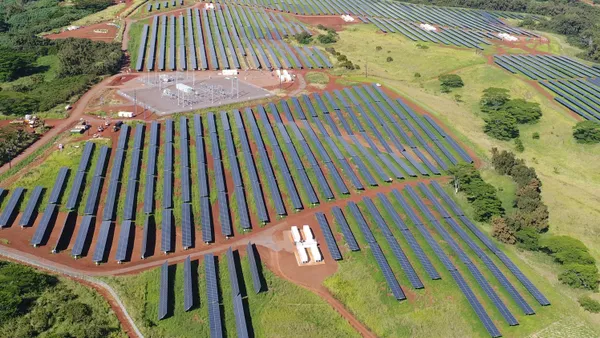Dive Brief:
- Meeting President Joe Biden's greenhouse gas reduction goals will require a "massive transformation" of the electric sector and could triple the United States' reliance on its power grid, according to Daniel Brooks, the Electric Power Research Institute's (EPRI) vice president of integrated grid and energy systems.
- About 20% of end-use energy consumption in the United States today is electricity, but that could rise to 60% by 2050 as the country moves towards a carbon-neutral economy, according to EPRI's analysis.
- There will be a "massive increase in dependence on the electricity sector by society as we go forward," requiring better energy planning and modeling, collaborative innovation across the industry, and supportive policies and regulations, Brooks said Thursday in a call with reporters.
Dive Insight:
Electricity is already foundational to society's operation, and it is about to become more so. Conversations that focus on "maintaining" reliability miss the point, Brooks said.
"The question that gets asked often is how do we maintain the reliability and resiliency of the grid in such a massive transformation? And that is completely the wrong question," he said. "In order to keep the risk to society the same, we have to actually increase the reliability and the resilience of the grid."
Power outages caused by extreme weather in California, Texas and the Southwest show that resource adequacy assessments must be redesigned to account for climate change, said Brooks. EPRI is continuing a partnership with the North American Electric Reliability Corp. and more than two dozen utilities to rethink how that planning is done.
"With the changing resource mix, and with the changing climate and extreme weather that we're exposed to, [current] methods just may not actually expose the actual risks to the electricity grid going forward," said Brooks. "We need to change those processes."
The Biden administration has set a target to reduce economy-wide greenhouse gas emissions by 50-52% by 2030, en route to a carbon-neutral economy in 2050. That will require transitioning the transportation sector to electric vehicles and electrifying buildings and industrial processes now running on fossil fuels.
To meet the 2030 target, EPRI sees electricity's share of end-use energy consumption rising from 20% to 33%. Looking out to 2050, that could rise to 40-60%, said Brooks.
To achieve a 50% greenhouse gas reduction, EPRI has projected load increases of 16-23% by 2030, according to Thomas Wilson, a principal technical executive in the energy systems and climate analysis group at EPRI. And the group expects more than 500 GW of new capacity will be built by 2030 — though not all of that is needed for demand growth. Much will go to replacing generation currently provided by coal and other fossil fuels.
Solar, wind, hydro and nuclear will all play a role in the future grid, according to EPRI.
“There’s no silver bullet," EPRI CEO Arshad Mansoor said during the Thursday discussion of the energy sector's future.
His comments followed estimates released Monday by Rhodium Group, showing U.S. greenhouse gas emissions increased 6.2% last year as the economy recovered and COVID-19 vaccines became available. Emissions remained 5% below 2019 levels, the firm noted.
Despite the increase, Mansoor said last year was a "catalyst" for clean energy expansion in the U.S. and around the world. In particular, targets announced by global leaders at the 2021 United Nations Climate Change Conference in Glasgow, Scotland, set the stage for rapid action to reduce greenhouse gas emissions.
"The opportunity is in the global recognition that the electricity sector — clean electricity — will be the tip of the spear," Mansoor said. "We have to make sure we are getting the electric grid ready for the new weather normal."















